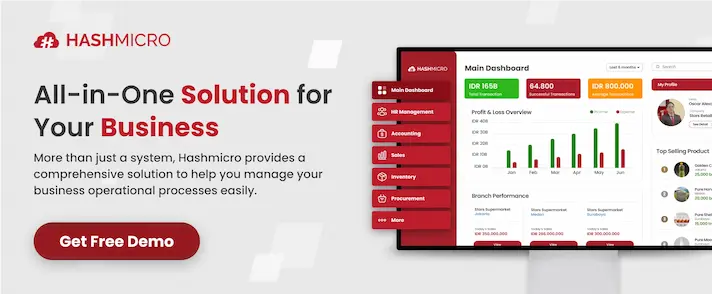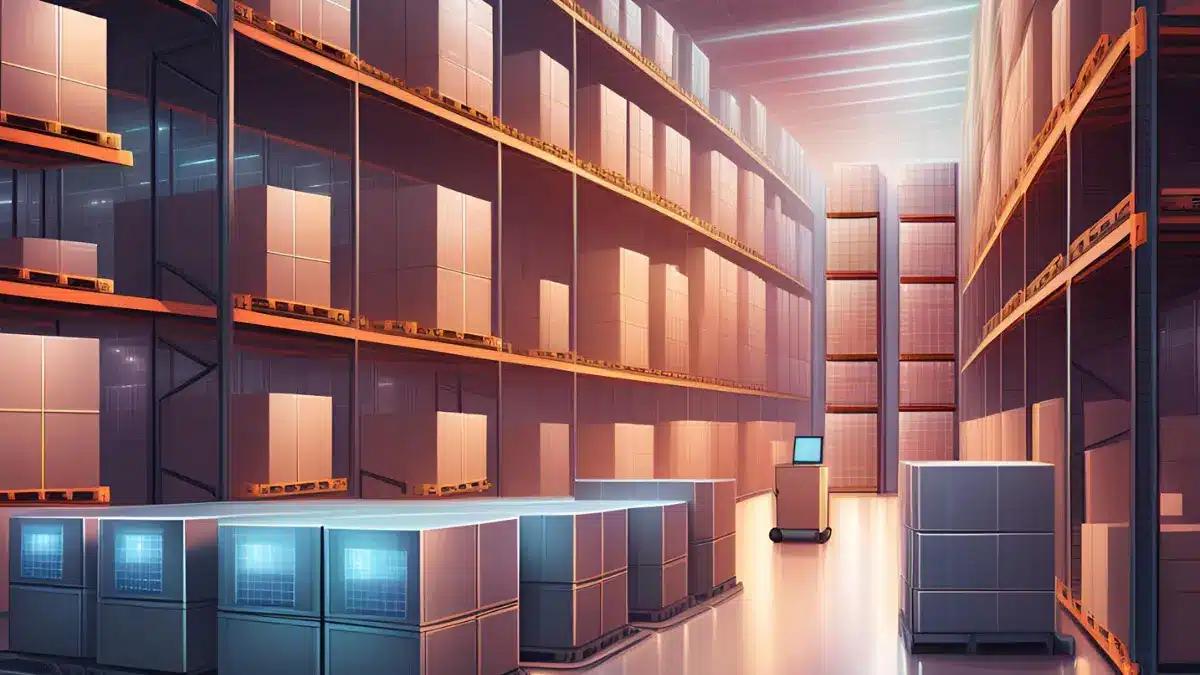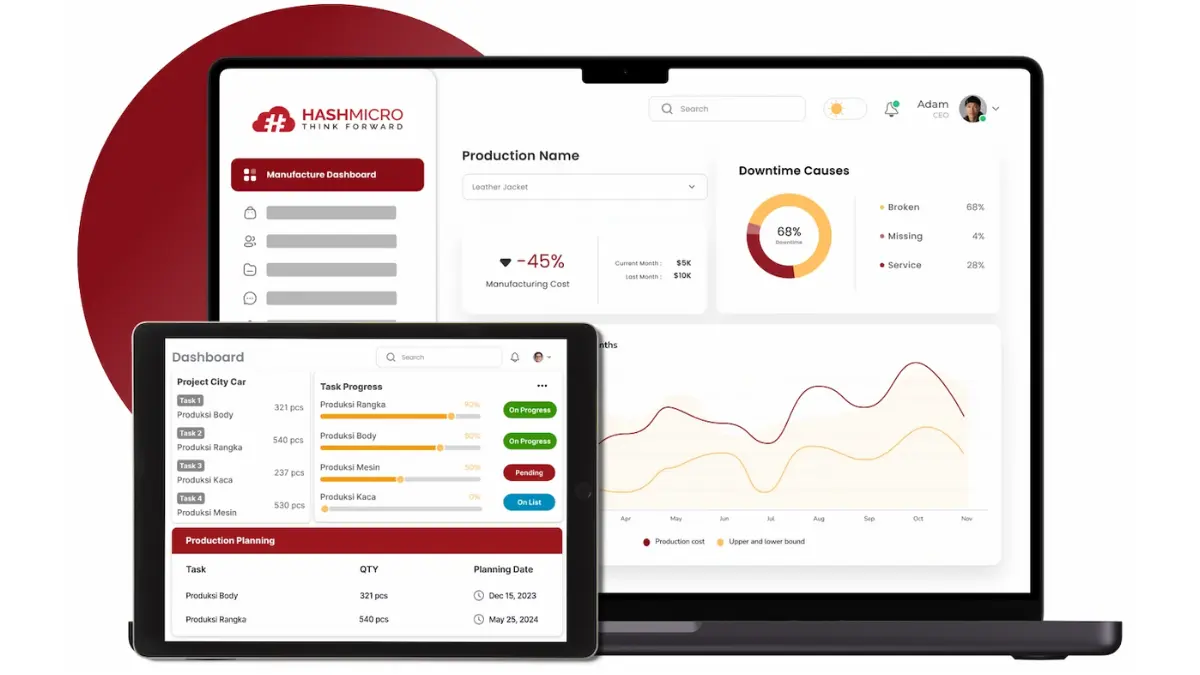Managing the internal flow of goods and information in a warehouse is no easy task, especially when efficiency is on the line. Intralogistics managers constantly face the challenge of maintaining smooth operations while minimizing costs and maximizing productivity.
The most common issues include inventory inaccuracies, inefficient storage management, and order fulfilment delays. These problems can severely disrupt workflows, leading to increased costs and customer dissatisfaction, making it essential to address them effectively.
A study stated that while WMS functionalities are robust, integrating them with warehouse automation technologies remains challenging. However, companies that have successfully integrated these systems report improved accuracy and speed in order fulfilment.
This highlights how adopting the right software solutions can transform intralogistics management and boost overall warehouse performance. This article dives deeper into intralogistics and how the right solution can help you overcome these intralogistics challenges.

Key Takeaways
|
What is Intralogistics & Why is it Important?
Intralogistics, or internal logistics, is a branch of logistics that focuses on organizing material and information flow within a company. It involves managing various internal processes, from moving and storing goods to controlling inventory and handling equipment.
One key reason intralogistics is essential is that it directly impacts warehouse efficiency. By optimizing internal processes, businesses can reduce costs, minimize errors, and enhance the speed of operations, leading to improved supply chain performance.
Additionally, intralogistics plays a crucial role in boosting customer satisfaction. When companies can streamline their internal operations, they ensure faster order fulfilment and accurate inventory management, ultimately providing more reliable customer service.
Benefits of Intralogistics Solution

Implementing an intralogistics solution can transform your warehouse, offering numerous benefits directly impacting efficiency and cost-effectiveness. By streamlining internal processes, businesses can overcome common challenges such as inventory inaccuracies, delayed order fulfilment, and inefficient material handling.
Let’s explore the key advantages that intralogistics solutions bring to enhance your warehouse management.
1. Reduces inventory and storage costs
Implementing intralogistics solutions streamlines logistics planning, reducing labour costs and enhancing warehouse efficiency. By offering real-time data and automation, businesses can swiftly adapt to market changes, ensuring agility in storage management without incurring extra expenses.
2. Increases flexibility
Intralogistics enables businesses to leverage data generated by high-tech machines for better supply chain and logistics management practices. This flexibility allows companies to adjust to shifting demands, seamlessly meeting their evolving needs and optimizing their warehouse planning strategies.
3. Makes the workplace safer
With intralogistics, automated systems handle materials safely, minimizing human errors and reducing potential accidents. This approach enhances workplace safety and eliminates unnecessary obstacles, allowing employees to work more efficiently in logistics.
4. Improves warehouse efficiency
By streamlining supply chain processes, intralogistics significantly reduces the time and labour required for picking, packing, and transferring products. This efficiency boost minimizes the reliance on manual labour, making warehouse planning more productive and cost-effective.
5. Value-added customer experience
Intralogistics automation has a direct, positive impact on customer experiences by identifying bottlenecks and streamlining operations. This smooth logistics management process naturally increases customer value, resulting in higher satisfaction and loyalty.
6. Improved inventory accuracy
Automated inventory management systems within intralogistics enhance inventory accuracy, minimizing errors in stock counts. This precise storage management approach helps businesses maintain optimal inventory levels, reducing stock-related issues and improving overall logistics planning.
7. Increases visibility
Intralogistics provides real-time information on material status and shipping, significantly increasing supply chain visibility. This transparency improves customer service and ensures timely product delivery, creating a more reliable and efficient logistics management system.
Now that you know the benefits of an intralogistics solution, you can consider using the right intralogistics management software like the one HashMicro offers. Register for a free demo to learn more about the benefits of this vendor’s WMS Singapore solution!
Main Challenges in Intralogistics Management

Managing intralogistics efficiently is no small task, as it requires balancing multiple processes, from inventory control to material handling. Despite technological advancements, many businesses face challenges that can hinder productivity and increase costs.
Understanding these challenges is the first step to finding practical solutions to optimize your internal logistics operations.
- Automation and technology: Implementing advanced technologies like automation, robotics, and warehouse management systems can be expensive and complex, posing a challenge for many businesses in logistics planning.
- Data management: The large amount of data generated in logistics operations requires effective management systems to convert it into actionable insights for efficient warehouse planning.
- Training and empowerment: Introducing new technologies in intralogistics requires comprehensive staff training to operate and maintain these systems, which can be time-consuming and resource-intensive.
- Information security: As logistics management becomes more digitized, safeguarding sensitive data and ensuring information security has become increasingly important.
- Flexibility: The ability to quickly adapt to market demand and changes in supply chain dynamics requires a flexible approach to storage management and logistics planning.
Choosing a solution that meets your specific needs is essential to overcoming the main challenges in intralogistics management. Click the banner below to try our warehouse management system Singapore pricing calculator and find your business’s most accurate software pricing.
How Does the Intralogistics Process Operate?

Exploring how the process works is essential to understanding how intralogistics can transform your warehouse operations. Intralogistics involves the seamless movement, storage, and handling of materials within a facility, ensuring efficiency at every stage.
By optimizing these internal processes, businesses can significantly reduce costs, improve productivity, and enhance customer satisfaction.
1. Inventory management
Intralogistics begins with efficient inventory management, where goods are tracked from the moment they enter the warehouse. This ensures smooth material flow, allowing for quick retrieval and accurate stock levels.
2. Material handling
The next step involves the movement of goods within the warehouse using automated systems or manual processes. Effective material handling is crucial to optimize space, reduce damage, and ensure timely delivery of products.
3. Storage solutions
Products are then stored in designated areas using a strategic management system that maximizes space utilization. Organizing items based on demand and size enhances material flow, resulting in faster picking and packing processes.
4. Picking and packing
Intralogistics streamlines the picking and packing process using warehouse management software that guides workers to the exact location of items. This increases operational efficiency, minimizes errors, and ensures that material handling is carried out effectively.
5. Shipping and distribution
Once orders are picked and packed, the intralogistics system ensures they are shipped promptly to meet customer demands. Proper material flow during this stage ensures that goods reach their destinations on time, enhancing customer satisfaction.
6. Data collection and analysis
Data is collected in real-time to monitor inventory levels, material handling efficiency, and overall warehouse operations. This information aids in logistics planning, enabling businesses to make data-driven decisions for continuous improvement.
7. Automation integration
Many intralogistics processes incorporate automation, like conveyor systems and robotic pickers, to enhance speed and accuracy. Automation reduces manual labour, accelerates material flow, and boosts the overall productivity of warehouse operations.
8. Continuous monitoring and optimization
Intralogistics processes are continuously monitored to identify bottlenecks and inefficiencies. Regular evaluations help refine logistics planning, improve material handling, and ensure a consistent warehouse material flow.
What is the Difference Between Intralogistics and Logistics?
The first step in understanding intralogistics is to recognize how it differs from traditional logistics. While logistics involves the movement of goods between different locations, such as transporting products from warehouses to retailers, intralogistics focuses on managing activities within the confines of a single facility.
Intralogistics emphasizes the internal flow of materials, coordinating how products move through various stages inside a warehouse or manufacturing plant. This process often involves using advanced technologies, such as Automated Storage and Retrieval Systems (AS/RS) and warehouse management systems, to enhance efficiency and accuracy.
Moreover, intralogistics leverages material handling equipment, like conveyor belts and robotic pickers, to streamline operations within a business. Unlike broader logistics, which deals with outbound handling, intralogistics targets optimizing internal processes to support supply chain management and improve overall productivity.
Streamline your Intralogistics Management with HashMicro’s WMS Solution

HashMicro’s WMS (Warehouse Management System) is one of Singapore’s best solutions for intralogistics management. It offers comprehensive tools to help businesses optimize their internal processes, from inventory control to order fulfilment.
Take advantage of HashMicro’s free demo to learn how its WMS can transform your intralogistics operations. This hands-on experience allows you to explore the software’s capabilities and see firsthand how it can benefit your business.
HashMicro’s WMS provides key features to streamline warehouse activities and enhance overall productivity, such as:
- RFID Warehouse Rack Stock Automation: RFID technology automates stock tracking and monitors inventory in real-time, reducing manual errors and enhancing accuracy. This feature streamlines the stock management process, making it more efficient and reliable.
- Barcode, Lot, and Serial Number Tracking: Easily track products using barcodes, lot numbers, and serial numbers to maintain precise control over inventory. This ensures complete traceability, allowing you to quickly locate items and manage stock.
- Cycle Time Analysis: Analyze cycle times to identify bottlenecks and optimize warehouse processes for faster order fulfilment. Monitoring these metrics can enhance overall productivity and streamline logistics operations.
- Stock Optimizer per Warehouse: Optimize stock levels in each warehouse with automated tools that suggest ideal inventory quantities. This helps prevent overstocking or stockouts, ensuring smooth and cost-effective warehouse management.
- 3D View of Stock Location: Gain a 3D view of stock locations to visualize warehouse space and easily identify item placements. This feature improves picking efficiency and reduces the time needed to locate products.
- Removal Strategy Management: Implement removal strategies, like FIFO (First-In, First-Out), to manage inventory turnover and reduce waste. These strategies can keep stock levels optimal and improve product shelf life.
- Pick, Pack, Delivery 3-Step Route Warehousing: Simplify order processing with a three-step route that covers picking, packing, and delivery. This method enhances accuracy and speeds up fulfilment, ensuring timely customer deliveries.
- Comprehensive Reporting/Analytics: Access detailed reports and analytics to monitor warehouse performance, inventory levels, and sales trends. With actionable insights, you can make data-driven decisions to optimize logistics and boost profitability.
In addition to these features, HashMicro’s WMS can integrate with other systems and modules, ensuring a unified workflow for your business operations. You can also easily customize the solution to fit your business needs, providing a flexible and scalable option for effective intralogistics management.
Conclusion
Intralogistics plays a crucial role in the internal management of materials and information within a business. For companies in Singapore, having the right software solution is essential to optimize their intralogistics processes and maintain efficiency.
One of the most effective solutions is HashMicro’s Warehouse Management System Its comprehensive features and flexibility can significantly enhance your warehouse operations, making it the ideal choice for businesses seeking to streamline their intralogistics.
To experience the benefits firsthand, sign up for a free demo with HashMicro’s professional team and discover how their WMS can transform your warehouse management.

FAQ About Intralogistic
-
What is the meaning of intralogistics?
Intralogistics involves planning, setting up, implementing, and managing internal material movements within a company using conveyor and supporting information systems. Simply put, it covers all logistical movement of goods and materials within the company’s premises.
-
What are the processes of intralogistics?
1. Goods In: The receiving and checking of incoming goods to ensure they match the order specifications.
2. Storage: Organizing and placing goods in designated warehouses for easy access and inventory management.
3. Production Supply: Supplying materials or components to the production line promptly to keep manufacturing processes running smoothly.
4. Order Picking: Selecting and gathering the necessary items from storage to fulfill customer orders efficiently.
5. Dispatch: Preparing and packaging orders for shipment to ensure timely and accurate customer delivery.
6. Goods Out: Managing the final stage of moving goods out of the warehouse for delivery to their destination. -
What are the 3 main activities of logistics systems?
Logistics systems comprise three key activities: order processing, inventory management, and freight transportation. Order processing is closely linked to the flow of information within the logistics network and encompasses various crucial operations.
-
Is warehouse and logistics the same?
Warehousing and logistics are often grouped but serve distinct but interconnected roles. While warehousing emphasizes storing and organizing goods, logistics focuses on managing these products’ movement, shipping, and delivery to the end customers. Both are essential components of a seamless supply chain, working hand-in-hand to ensure efficient operations.













